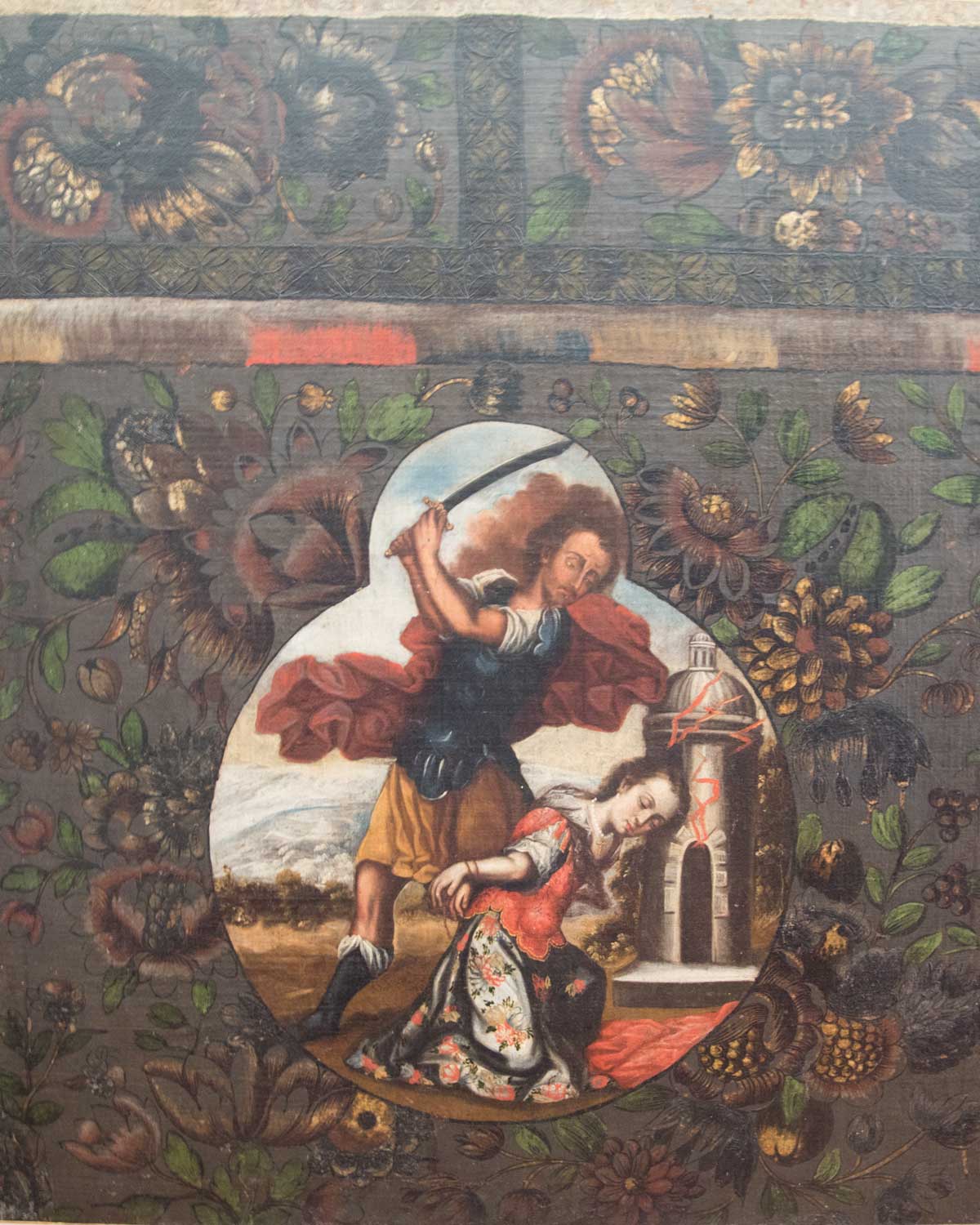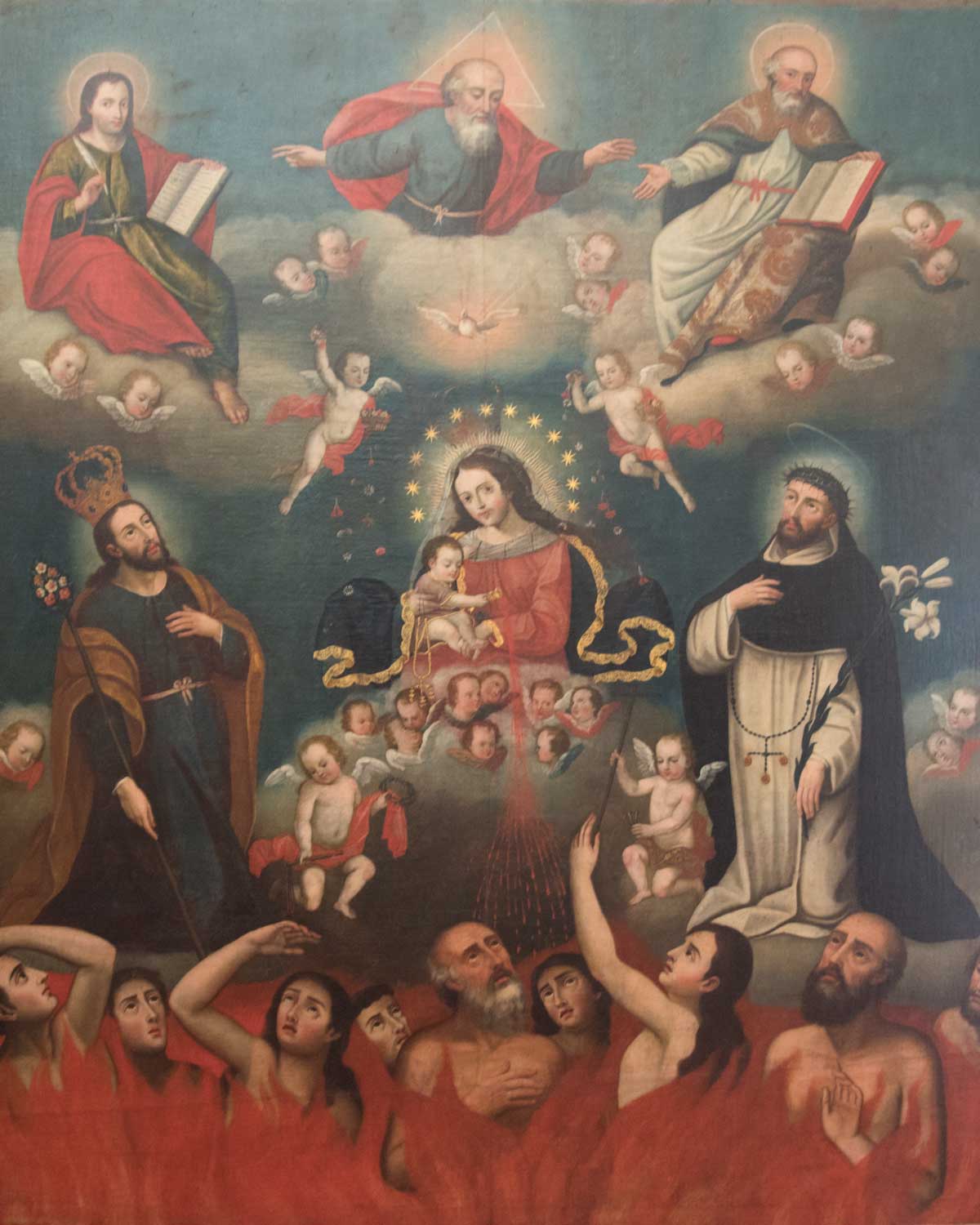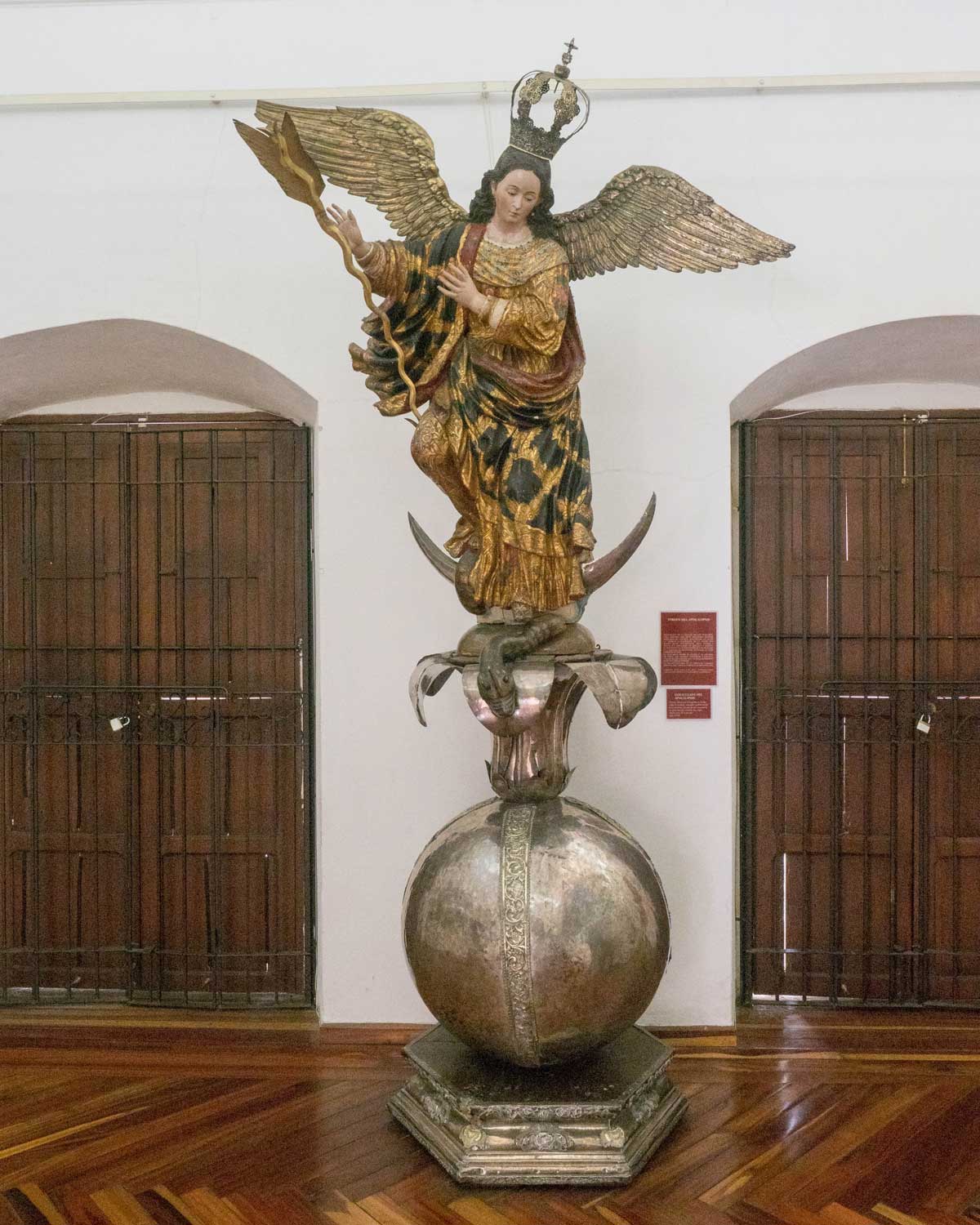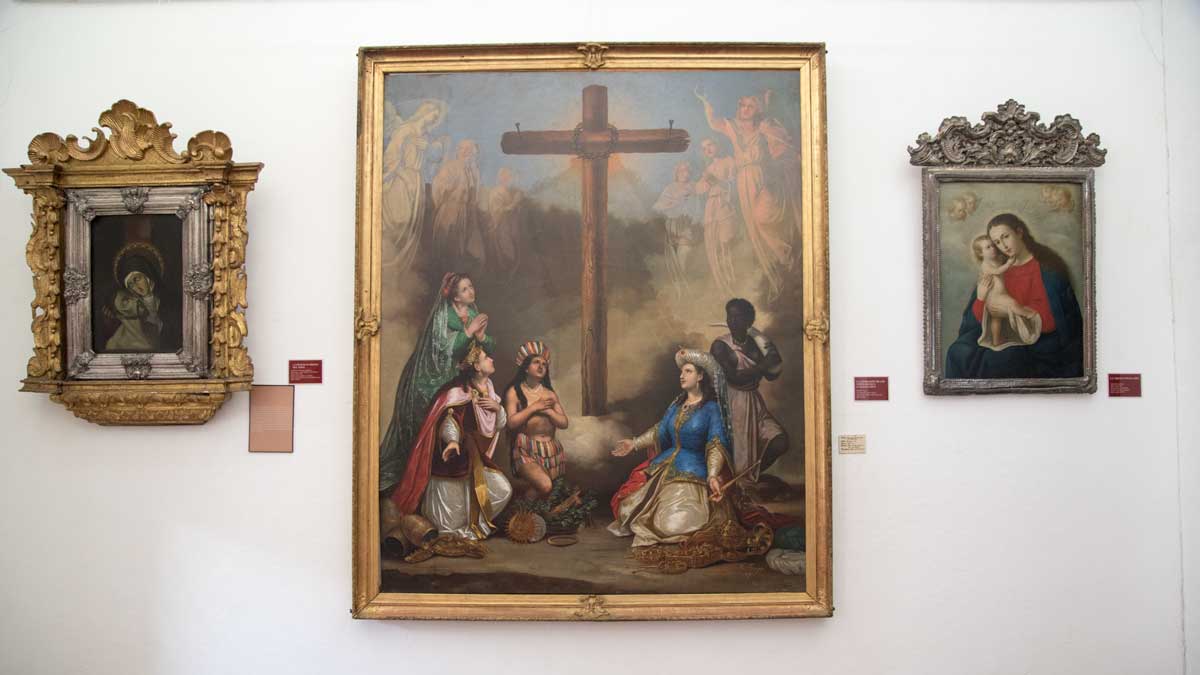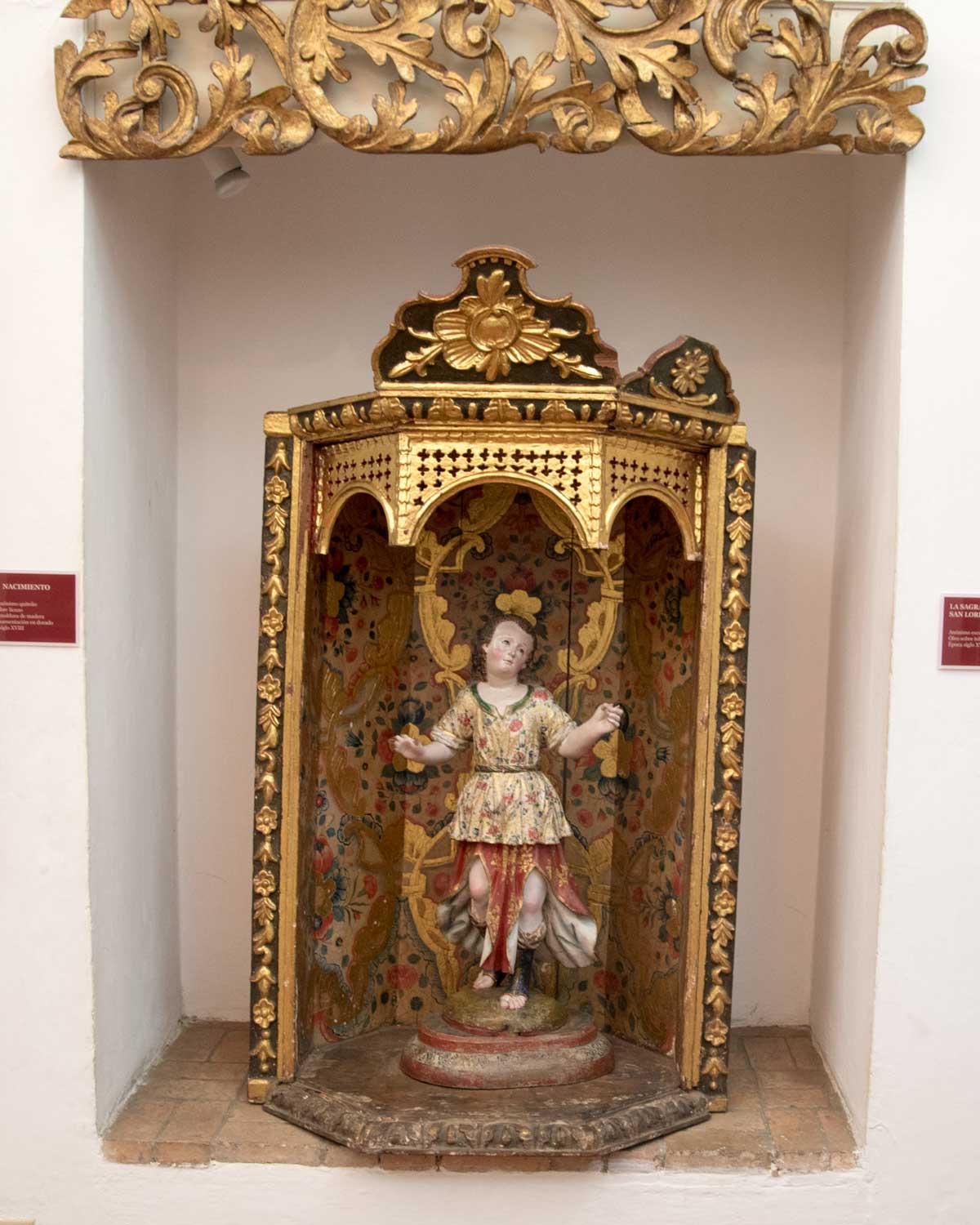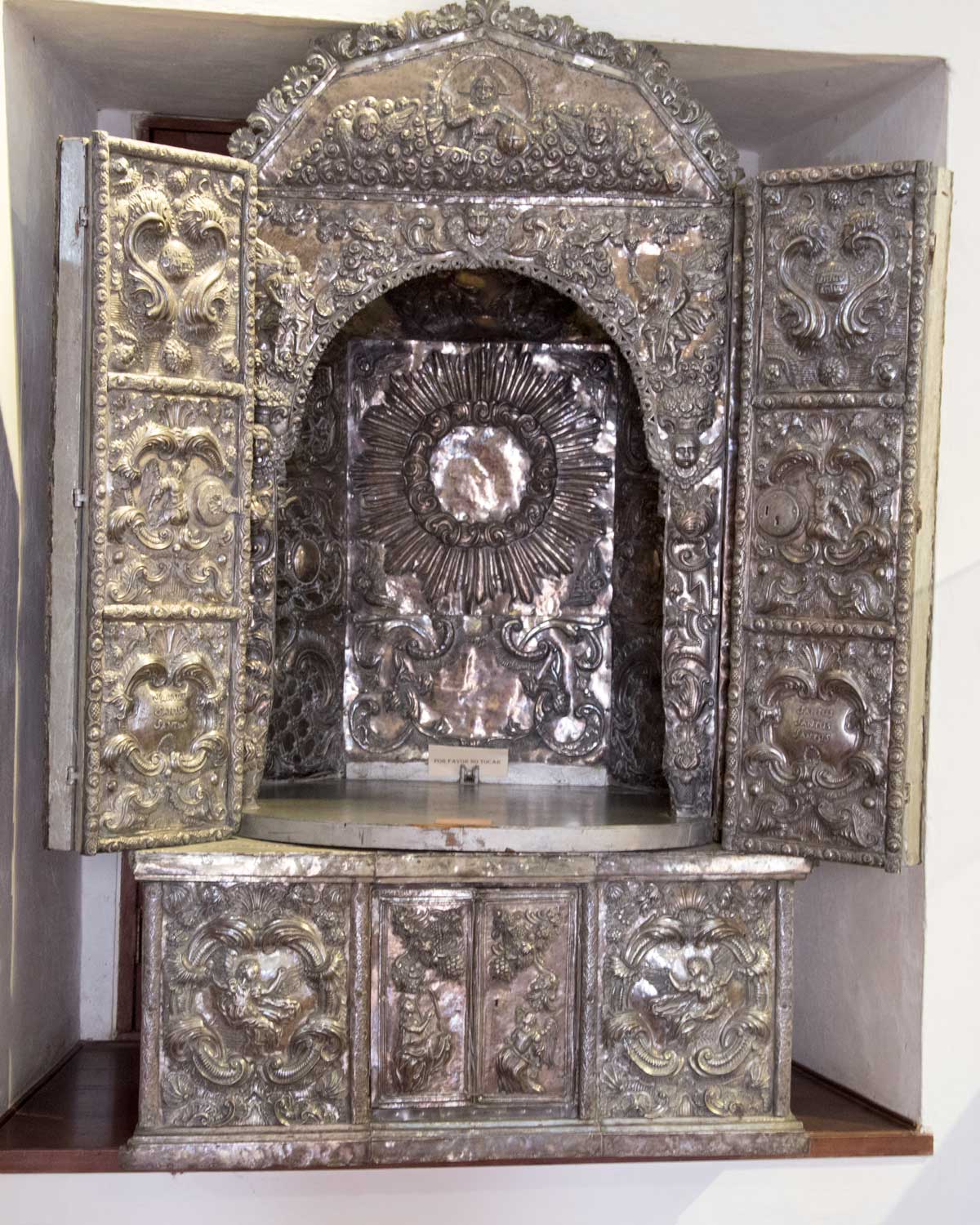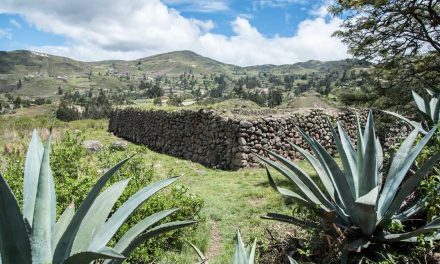As responsible travelers evolve, so do the stories we share.
This article is part of our living archive — trusted content we continue to care for.
First published on October 7, 2018 • Last updated on December 10, 2018.
She approached me in Quito Room. Her request was polite and her manner told me that she preferred not to say anything at all. But the cleaning lady had clearly been sent on a mission to ask that I stop taking pictures. I was a little confused because when we had entered the Museum of the Archdiocese of Popoyán, a kind gentleman at the entrance responded to my question about taking pictures with a definite yes. Just don’t use any flash.
Not a problem. We’ve been in and out of museums in Bogotá taking photos in all kinds of collections, from colonial religious art to modern Boteros. Why should it be any different in Popoyán?
Asking To Take Photos At the Archdiocese Museum of Religious Art
When I tried to explain that we had permission, she glanced over her shoulder to the corner of the room and then looked back at me. She shook her head and explained that the Directora had seen us already. She wasn’t pleased. You see, we weren’t just snapping photos for Instagram with our phones. We were using professional cameras and taking pictures of everything! (Okay, that’s an exaggeration but I do admit, we were a little excited to see so much art from the Quito school. Call us art nerds.)
I politely asked if I could speak to the Directora and ask for permission to continue. I then dug out my business cards which serve as a mini-portfolio of my work. I showed her a wide selection of Ecuadorian images. She oohed and aahed and selected a photo of a Pale-mandibled Aracari and a portrait of a Quiteña to keep. Then she shook her head again, all while apologizing and telling me that the Directora was sure to notice. After all, she had already spotted us on the security cameras.
Sure enough, high in the corner of the room, directly where this nice lady kept looking over shoulder, was a camera with a pinpoint red light. With a slight glance back at the camera, she turned to make sure her mouth could not be seen and told me, very quietly, that perhaps a couple more wouldn’t hurt. With the promise that I would limit my enthusiasm, she left me to continue the tour.
La Escuela Quiteña in Popoyán
I turned to catch up with my husband, who had conveniently escaped the lecture, to find out that he had already photographed many of the pieces in the next room. My favorite was a life-sized Virgin of the Apocalypse made in the same style as the statue that stands on a small hill overlooking the city of Quito. Those of you who are regular readers might remember that the Virgin of the Panecillo, as she is called, is a copy of a statue made by Bernardo de Legarda, an artist of the Escuela Quiteña, the colonial Spanish school that taught native Ecuadorians to paint in the Spanish-style. This beauty stands alongside one wall in between two locked doors; a small rope attached to her back prevents her from falling forward. Her wings and arms appear almost to be moving, as if she might fly from the silver orb on which she stands. She is the last piece of art I expected to find in Colombia.
We continued to walk further into the room, enjoying different art work along the way. So many of the gorgeous paintings came as a great surprise. The best pieces are easily identified as coming from artists trained in the Escuela Quiteña. It is is unclear how many of them were painted in Quito and made their way north and how many were painted in Popoyán, once the capital of a region that is modern-day southern Colombia and northern Ecuador.
The Arrival of the Directora
A few minutes later, I hear footsteps coming up the dense stone steps to the second floor where we are touring. Shoes hit the wooden floor in the adjoining room and tip tap their way towards us. I don’t dare turn around to see who is approaching as I fear the Directora is coming to tell us off. I stare diligently ahead at a piece of artwork that isn’t particularly interesting. But the footsteps come right up to the entrance behind us and stop. The only way out of this room is through that very same door.
I turn to find a slender woman dressed neatly in a short jacket and dress. She is the perfect Directora, prim and proper. I catch her a little off guard by offering my hand to introduce myself. Of course, that is after I murder my Spanish introduction. Nerves will get me every time. A few niceties and then I explain my blog and why photos are important to include in any article I write about the museum. She is not impressed though she is polite enough not to say so. I can see it in her eyes.
However, my time spent working political campaigns has taught me well… never leave the conversation without a direct ask. So ask I did,
Por favor, es posible sacar algunos fotos más para acompañar un artículo sobre este museo excelente?
Please, it is possible to take a few more photos to accompany an article about this excellent museum?
While I hope for a simple yes, I receive a no accompanied by an explanation long enough to be a chapter in a book. Needless to say that the Directora does not have the final decision-making ability in this concern. Rather, the Archbishop himself, or maybe some of his intermediaries, would need to grant permission.
The Directora decides to take the opportunity to join us and begins to describe items in the collection. We might have considered it a great honor to have the director of this museum become our tour guide but we knew what is actually going on. She has become our babysitter. Fortunately, two rooms into the impromptu tour, another group attracts her attention. She is torn. I take the opportunity to thank her for her time and promise not to take another photo. And I really mean it when I say it.
Sharing Art Beyond the Walls of a Museum
The rest of the collection is amazing. A version of the Last Supper shows Jesus and his apostles dining on a combination of European and South American style foods, including arepas. It makes me sad that even after asking if I could find a quality image online to share, that you cannot see the detail in this painting. Online images are few and those that I can find our dark or blurry.
Just as we think we are finished, our friendly entrance attendant joins us. He seemingly wants to make sure we don’t miss any of the downstairs exhibits. But it is soon clear that he wants me to photograph more of the beautiful pieces of art, beginning with a different version of the Virgin of the Apocalypse that we find in a small chapel-like space on the ground floor. Somehow, this man who has been appointed to guard the entrance of the museum seems to understand something that the Directora does not, that art is best shared. Although most of you will not look at these photos and say, “Let’s go to Popoyán, Colombia!” some of you will. It is the sharing of photos and images that compels so much of modern day travel. After all, one of the most well known images of all times, that of the Mona Lisa, is no less-visited even while her photo has been taken thousands of times.
As we admire one last item in the collection, a huge reliquary made of hammered silver. This large wardrobe like piece of furniture once sat in the San Francisco church, protecting the church relics. While we knew it was unlikely that it meant the church in Quito, Ecuador, we ask anyway. Our self-appointed guide replies with a question.
“Quieren ver a dentro de la Iglesia San Francisco (Would you like to see the inside of the San Francisco Church)?” he asked.
“Por supuesto (of course)!” we answer.
“Un momentito,” he replied.
As he handed his responsibilities off to the woman who initially warned us about photo-taking, he lead us out the front door and across the street. But rather than go to the entrance of the neighboring church, we enter a back door that takes us to a small office. With a nod to the woman sitting at a desk, our guide receives permission to enter without having said a word. We both say “buenas tardes” as we pass by. We pass a long room filled with religious paraphernalia and stacks of beams, walk though a small doorway and find ourselves inside one of the most rustic yet beautiful churches I have ever seen.
Needless to say, when we asked to take photos, we were granted immediate permission.
As we left the church, we thanked our guide and asked him for his name. He replied, Javier Carvahal. If you would like to see photos of the church were Javier was baptized as a small child, stay-tuned. I promise that post sometime soon!


